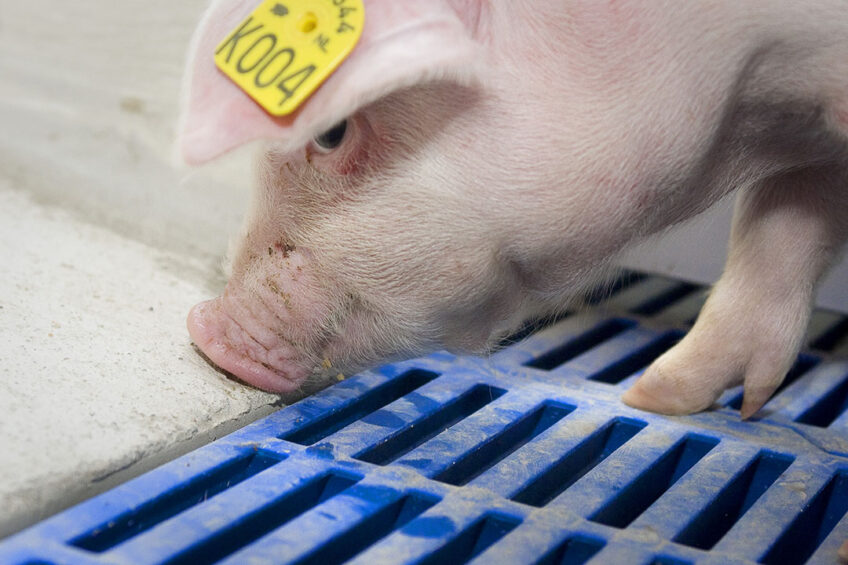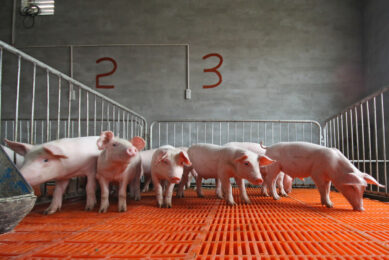Welfare: Enabler of animal performance

High welfare standards are a prerequisite of good performance in all livestock production systems. Risk assessment and specific nutrition can help reduce stress in young piglets.
High welfare standards for piglets can be achieved through good feeding, health, housing and management, meaning access to food and water, ease of movement, appropriate room temperature, absence of pain and good human-to-animal interactions.
Yet factors affecting welfare in piglets are highly complex and multifaceted. As piglets progress through weaning, they face new challenges in these areas that can create stress and trigger welfare-related problems.
Causes and impact of tail biting
Tail biting can be a particular issue in weaned piglets. Many factors may be the cause, such as poor nutrition, lack of access to feed, poor nutrient balance, high pen density, poor ventilation or health problems. A lack of enrichment materials to keep piglets occupied, and to let them express their exploratory behaviour, will also increase the risk of tail biting.
Tail biting can have an immediate impact on the animal’s welfare and long-term effects on health due to infection and abscesses. Extra veterinary services, labour, reduced performance and, in extreme cases, carcass disposal expenses are just some of the costs encountered. Costs per victim of tail biting have been estimated at € 19.
Welfare form the word ‘go’
Good welfare starts early in life. Adoption should be carried out at the right age, between 12 hours and 2 days of age. Also, mixing litters between 2 weeks of age and a week before weaning can create positive socialising that will facilitate mixing of piglets post-weaning. A positive experience with humans, with minimum stress, will also keep piglets more content.
Welfare and environment key in innovative barn
A modular barn with many welfare aspects – that, in short, is the concept of “Het Familievarken” (The Family Pig). Built on the premises of pig farmer Ivo Bekkers, in Venhorst, the Netherlands, the barn has a special feature: pig toilets. Read more…
Promoting improved welfare in weaned piglets starts with a clear understanding of the risk factors, and any weak links must be identified and improved.
Risk Assessment Tool
Multiple factors are likely to be involved. Cargill has used its welfare studies and research results to develop a Risk Assessment Tool that is now used on farms to identify the main triggers of abnormal pig behaviour. There are 29 risk factors included, with each weighted towards the age and stage of the pig. In the weaned piglet, higher risk factors that carry more weight are health, enrichment materials, stocking density and human visits.
Research and literature reviews support the link between nutrition and behaviour. Nutrition has been shown to play an important role in supporting efficient and more welfare-friendly pig production…
Results from this risk assessment can be used to implement a management and nutritional plan specific to the farm and to the group of animals. That is all part of Cargill’s Welfare Plus programme.
Research and literature reviews support the link between nutrition and behaviour. Nutrition has been shown to play an important role in supporting efficient and more welfare-friendly pig production. Well-known examples are tryptophan and magnesium.
Plant micronutrients to help animals cope
In addition, combinations of micronutrients present in plants with specific properties can help animals cope better with stress and anxiety and lead to a calmer environment. Some plants contain micronutrients with antioxidant capacity shown to help manage oxidative stress in pigs. Those micronutrients, which work in a complementary way, also have anti-inflammatory properties and various other effects linked to welfare. The use of these plant micronutrients in feed can reduce behavioural issues, improve piglet performance and decrease vet and labour costs.











